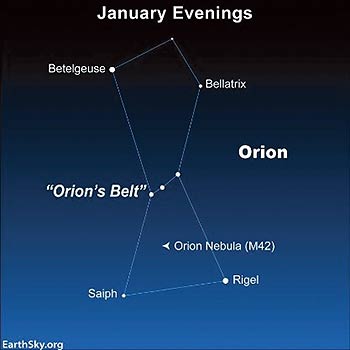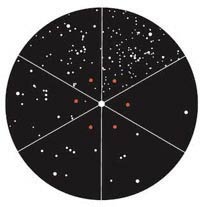 |
 |
| The Dark Sky Wheel, showing the constellation Orion at six different limiting magnitudes. |
The brightness of planets and stars is measured in terms of apparent magnitude, or how bright they appear from Earth. Most visible stars range in brightness from 1st to 6th magnitude, with the lower number being brighter. A star at magnitude 1 appears 100 times brighter than a star at magnitude 6.
Your sky’s limiting magnitude is, simply enough, the measure of the dimmest stars you can see when looking straight up. So, if the dimmest star you can see from your backyard is magnitude 5, then your limiting magnitude is 5. Easy, right? But why would you want to know your limiting magnitude? It can help you plan your observing! For example, if you have a bright sky and your limiting magnitude is at 3, watching a meteor shower or looking for dimmer stars and objects may be a wasted effort. But if your sky is dark and the limit is 5, you should be able to see meteors and the Milky Way.
How do you figure out the limiting magnitude in your area? While you can use smartphone apps or dedicated devices like a Sky Quality Meter, you can also use your own eyes and charts of bright constellations! The Night Sky Network offers a free printable Dark Sky Wheel, featuring the stars of Orion on one side and Scorpius on the other, here: bit.ly/darkskywheel. Each wheel contains six “wedges” showing the stars of the constellation, limited from 1-6 magnitude. Find the wedge containing the faintest stars you can see from your area; you now know your limiting magnitude!
If you love Moab’s night skies, and enjoy expressing your creativity, consider participating in the Moab Arts and Recreation Center dark sky themed exhibition! More information at https://moabcity.org/599/Dark-Skies-Art-Show.

|